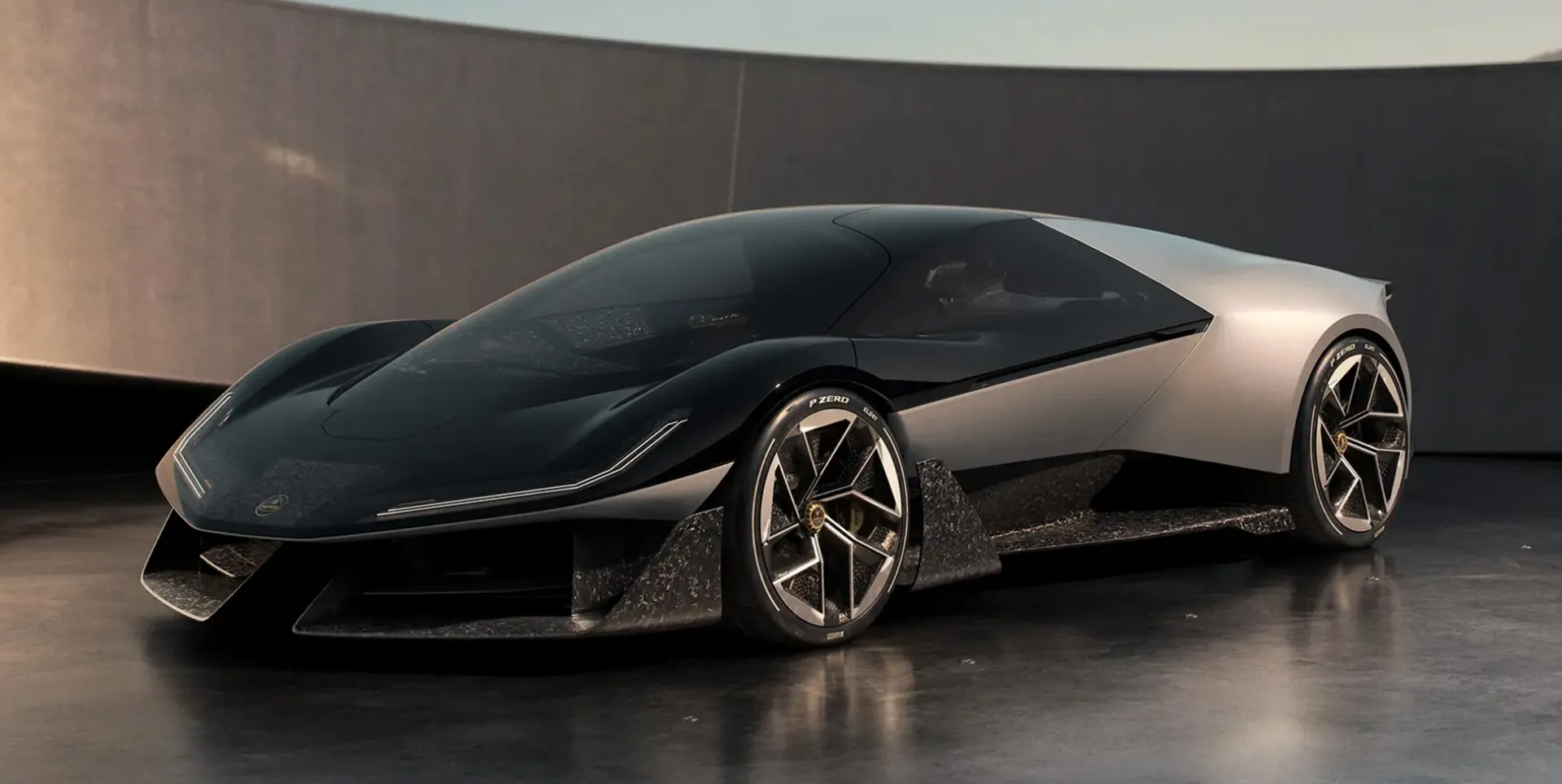- Lotus Theory 1 concept signals future design direction for brand
- Electric sports car concept features carbon-fiber construction and McLaren F1-style central driving position
- Concept combines 987 hp with targeted weight of less than 3,500 pounds
Lotus on Tuesday unveiled the Theory 1 concept to signal the design direction for the brand’s future models, including potentially the electric sports car that will replace the Emira.
The Theory 1’s design takes inspiration from Lotus’ past, specifically from the brand’s Type 72 Formula 1 car, the earlier Eleven endurance racer, and the Esprit sports car whose production lasted almost three decades, finally culminating in 2004.
It features a central driving position like the legendary McLaren F1, as well as dihedral synchro-helix doors much like what you’ll find on a Koenigsegg, only here the doors open toward the rear instead of forward like on the Swedish hypercars.
Inside, there’s only the bare essentials, in keeping with Lotus founder Colin Chapman’s philosophy of performance through lightweighting. Even the seats (one main seat for the driver and a passenger seat either side) have been replaced with padded sections fused with the car’s central carbon tub. The headrest section also houses speakers for the sound system.
Lotus hasn’t said how much the concept weighs but said the targeted weight was less than 3,500 pounds, which is impressive given the electric powertrain. The setup features a 70-kwh battery, dual-motor all-wheel-drive system, and a peak output of 987 hp, or less than half the output of the Evija hypercar. Performance claims include a 0-62 mph time of less than 2.5 seconds, a top speed of 200 mph, and a range of 250 miles.
Other technologies include active aerodynamics, cameras and sensors for a self-driving system that tuck away when not in use, and Pirelli P Zero Elect tires. Pirelli’s Elect series are specifically designed for electric vehicles and feature high efficiency coupled with noise reduction qualities. One interesting element found in the cabin are on-demand buttons which are placed on what Lotus refers to as a reactive textile and only surface when required.
Lotus hasn’t said whether the Theory 1 will enter production, though elements from it are likely to appear on future models from the brand, like the aforementioned Emira replacement. The new sports car, code-named the Type 135, is currently due in 2027, though a delay from this date can’t be ruled out.

автосервис рядом на карте
ivermectin oral – atacand over the counter order carbamazepine pill
order accutane 20mg pill – dexona oral zyvox 600mg drug
purchase azithromycin for sale – azithromycin 500mg price order nebivolol pills
buy prednisolone 40mg pills – azithromycin 500mg brand buy prometrium 200mg online cheap
gabapentin brand – buy sporanox 100 mg online cheap itraconazole 100 mg sale
buy furosemide generic – buy piracetam medication betamethasone 20 gm for sale
amoxiclav over the counter – purchase duloxetine sale purchase duloxetine for sale
buy semaglutide pills for sale – rybelsus 14 mg over the counter buy generic cyproheptadine 4 mg
tizanidine over the counter – order hydroxychloroquine 400mg pills hydrochlorothiazide online buy
purchase viagra for sale – tadalafil 20mg pills cialis daily cost
buy tadalafil 20mg – oral viagra sildenafil 100mg sale
cenforce 100mg without prescription – glucophage 500mg pills buy glucophage 500mg online
order generic atorvastatin 10mg – buy lipitor online cheap zestril 5mg canada
omeprazole to treat esophagus – buy metoprolol 100mg without prescription buy atenolol generic
medrol 16 mg without prescription – order pregabalin 150mg generic order triamcinolone generic
order generic clarinex 5mg – loratadine medication priligy order online
order misoprostol without prescription – diltiazem usa diltiazem 180mg tablet
acyclovir 400mg brand – brand crestor order generic crestor
purchase motilium – buy tetracycline 250mg for sale cyclobenzaprine 15mg us
oral motilium – buy sumycin buy generic flexeril over the counter
order inderal 20mg online cheap – clopidogrel pill purchase methotrexate pills
buy generic nexium for sale – order esomeprazole 20mg generic buy sumatriptan 50mg without prescription
levaquin pill – purchase dutasteride online ranitidine 300mg cost